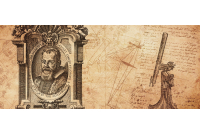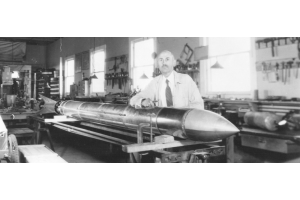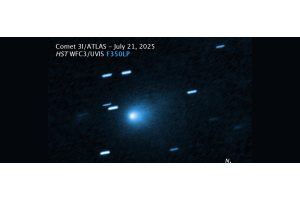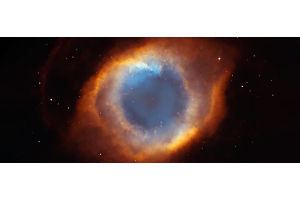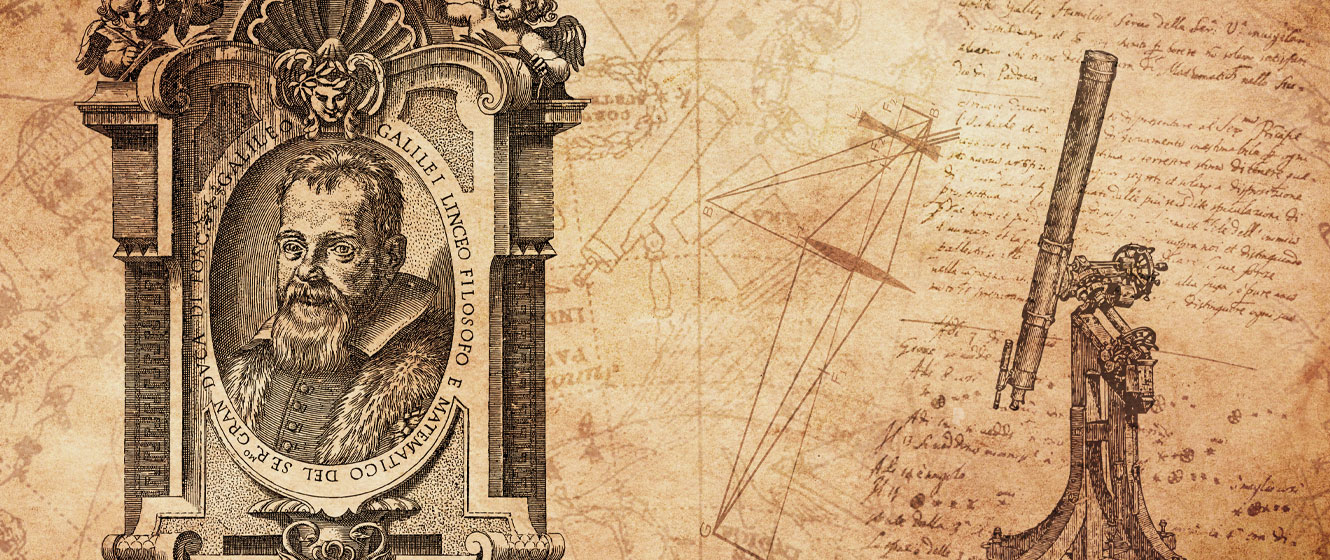
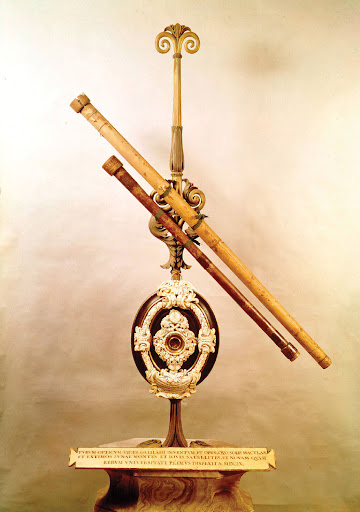
Image Credit: Scala/Art Resource, New York
The invention of the telescope began as quite the debate among three men from the Netherlands in 1608. Hans Lippershey, Jacob Metius, and Johannes Zachariassen all claimed to have invented the telescope just one year before it was made famous by Galileo. However, the credit officially goes to Lippershey, as he was the first to submit a patent application. Fast forward a bit and you’ll reach the story most of us heard as children about the telescope. Italian physicist and mathematician, Galileo, was the first to create a telescope and use it to observe the sky.
While the images weren’t perfectly clear, and the largest of his telescopes was only 120cm, he was able to view the mountains and craters on the moon, the phases of Venus, the four satellites of Jupiter, and “a ribbon of diffuse light arching across the sky” that would later be identified as the Milky Way.
Johannes Kepler was the next to improve upon the refracting telescope, which consisted of glass lenses mounted in a tube. Rather than using both a concave and a convex lens, he used two convex lenses, causing the images to appear upside down.
In the late 1680s, after studying Kepler’s work, Sir Isaac Newton discovered that the lenses caused differing refractions when different colored lights passed through them, so he created a telescope that used mirrors instead. The mirrors would reflect light, rather than allowing the light to pass through a lens and cause that refraction.
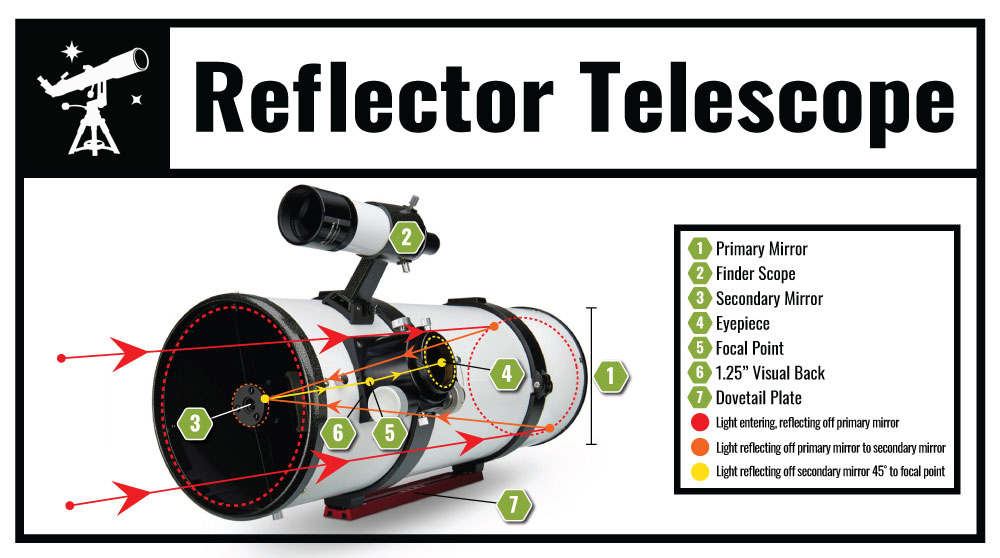
In the 18th century, Sir William Herschel persuaded the King of England to construct a reflector with a 39-foot focal length and a 120-centimeter mirror. Herschel then used this instrument to lay the observational groundwork for the concept of “extragalactic nebulae”, otherwise known as galaxies outside the Milky Way system.
Throughout the 18th and 19th centuries, both reflectors and refractors continued to evolve. In Ireland in 1845, Lord Rosse constructed a reflector with a 52-foot focal length and a 73-inch mirror. For 75 years, it was the largest telescope in the world. Meanwhile, William Lassell constructed several other reflectors. While the largest of Lassell’s telescopes was not quite as large as what Rosse had constructed, it did have a greater reflecting power. This allowed Lassell to catalog 600 new nebulae, in addition to discovering Triton (Neptune’s largest moon), Hyperion (Saturn’s 8th moon), and others. The largest refractor in existence today was constructed during this time period as well. In 1897, Alvan Clark designed and constructed this 40-inch refractor at Yerkes Observatory.
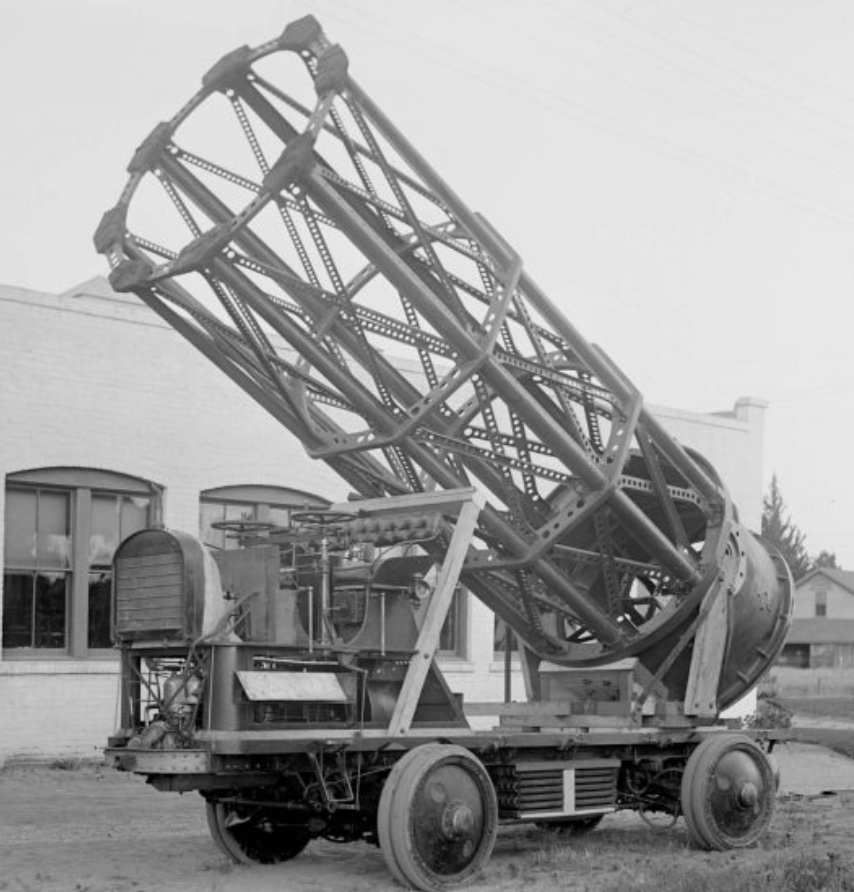
Image Credit: Carnegie/Huntington Library
We have continued to build increasingly larger telescopes as time has gone by, beginning with the 60-inch reflector at the Mt. Wilson Observatory. Followed by the 200-inch Hale Telescope built in 1948 at the Palomar Observatory, the 165-inch William Herschel Telescope of the Roque de Los Muchachos Observatory in the Canary Islands, and the 138-inch reflector at the German-Spanish Astronomical Center in Calar Alto, Spain.
At a certain point, increasing the size of telescopes was no longer improving our view of space. As long as a telescope was on Earth, it would be vulnerable to the distortions created by the planet’s atmosphere. For this reason, astronomers dreamed of having an observatory in space. In the 1940s, this concept was proposed by Lyman Spitzer. Outside of the Earth’s atmosphere, a telescope would have the ability to detect light from stars, galaxies, and other objects, without any of the light being absorbed or distorted first, creating a much sharper image.
In the 1970s, this proposal would begin to become a reality. The European Space Agency (ESA) and the National Aeronautics and Space Administration (NASA) began working together to design and build the Hubble Space Telescope (named after Edwin Hubble). On April 25, 1990 - five astronauts aboard the space shuttle Discovery deployed the telescope. Currently, the Hubble Space Telescope orbits approximately 350 miles away from the Earth’s surface and continues to capture unprecedented images, but that’s not where our telescope story ends.
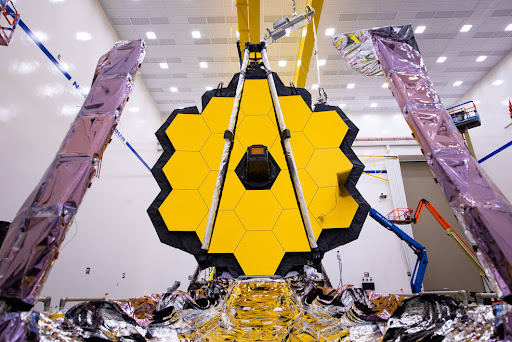
Image Credit: NASA
Hubble has a successor: the James Webb Space Telescope, “an orbiting infrared observatory that will complement and extend the discoveries of the Hubble Space Telescope, with longer wavelength coverage and greatly improved sensitivity”. The James Webb Space Telescope launched on December 25th, 2021 and it has already proven itself as an exceptional upgrade, providing images that are even better than anticipated!
The evolution of the telescope has expanded our understanding of the universe in ways we never could have imagined. We can't wait to see what the next century will bring to the world of astronomy!

Learn More
Interested in learning more about telescopes and other astronomy-related gear? Check out our Astronomy Hub!





